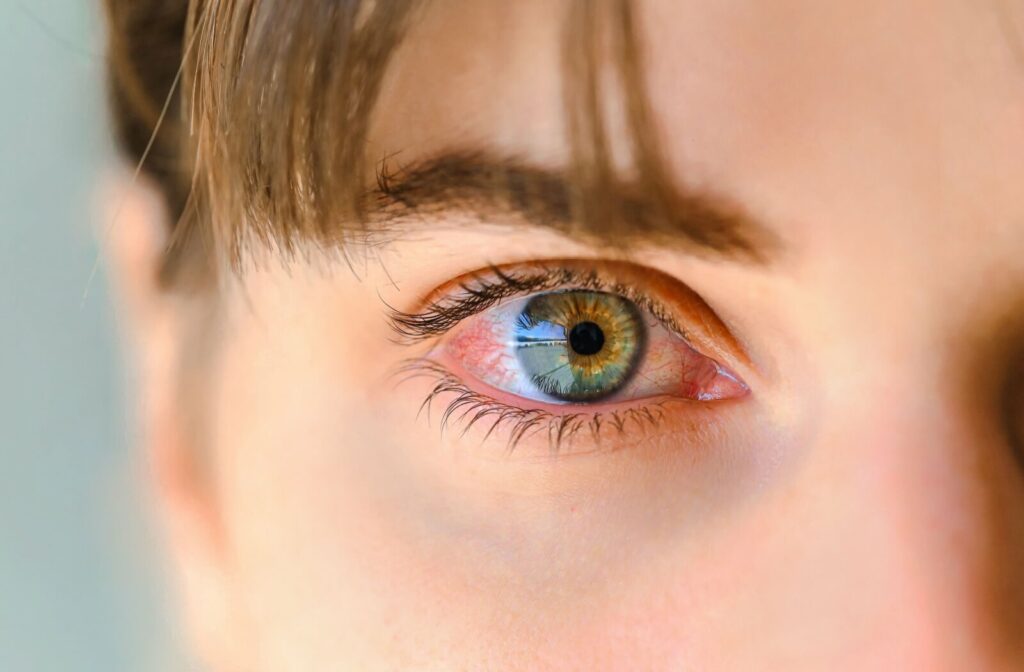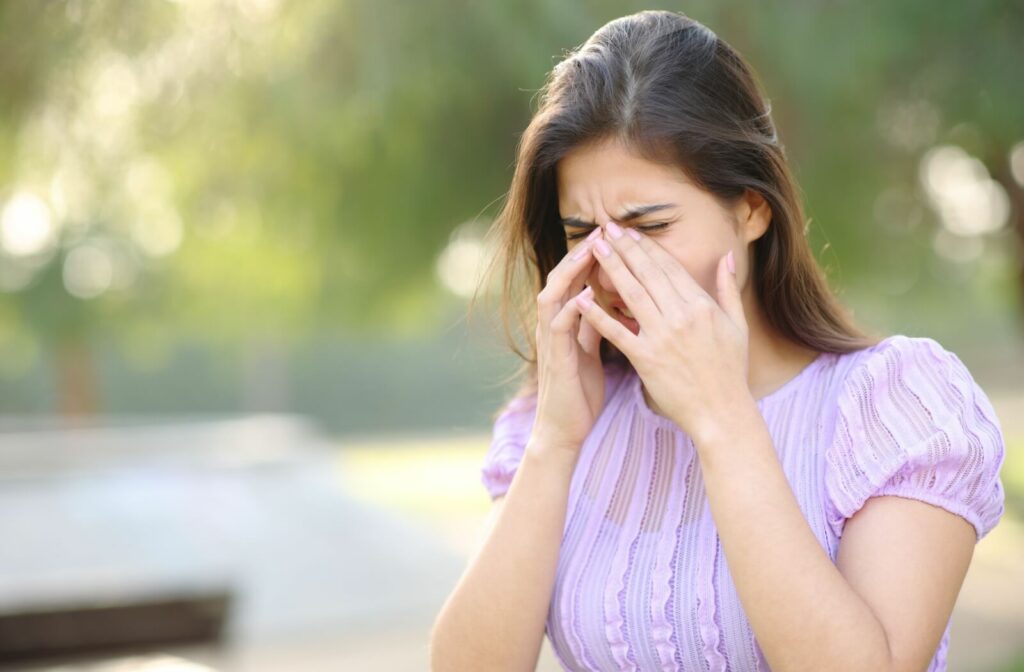Dry eye disease might seem like a minor annoyance, but the truth is that, if left untreated, it can lead to serious consequences—including, in rare cases, damage to your vision. The dry, gritty, or burning sensation we often associate with dry eyes is more than just uncomfortable—it’s your body’s way of telling you something is wrong.
While dry eye typically doesn’t cause blindness, untreated chronic dry eye can lead to corneal damage, infection, and, in rare cases, permanent vision loss.
If you’ve been experiencing ongoing discomfort, blurred vision, or sensitivity to light, it may be time to speak with your eye doctor. At Valley Eye & Vision Clinic, we specialize in diagnosing and managing chronic dry eye to help you preserve your long-term vision and comfort. Learn more about our dry eye therapy services to discover how we can help.
Understanding the Role of Tears
Tears aren’t just for emotional release—they also serve a vital role in your overall eye health. A healthy tear film keeps the eye’s surface smooth, nourished, and free of debris. Your tear film also protects against infection by flushing out irritants and delivering essential proteins and enzymes.
When your eyes either don’t produce enough tears or the tears they produce are poor in quality, your cornea can dry out, leading to inflammation, irritation, and potentially more serious issues over time.
How Dry Eye Can Affect Your Vision
Corneal Damage
The cornea is the clear, dome-shaped surface that covers the front of your eye and helps focus incoming light. Without proper lubrication, the corneal tissue becomes vulnerable to friction and irritation. Over time, this can result in micro-abrasions or more severe scarring.
Scarring on the cornea can distort your vision, reduce clarity, and, in extreme cases, lead to partial or complete blindness.
Infections
Tears help protect the eye from bacteria and other contaminants. When your eyes are too dry, their natural defense system is compromised, increasing the risk of infections such as keratitis (corneal inflammation). Untreated infections can result in corneal ulcers, permanent scarring, and vision loss.
Visual Disturbances
Dry eye often causes fluctuating or blurry vision. This is because an uneven tear film interferes with how light passes through the eye. Although not always dangerous, these visual disturbances can become disruptive to your daily life and may worsen if dryness persists.
Complications from Underlying Conditions
Chronic dry eye can be linked to autoimmune disorders such as Sjögren’s syndrome, which affects the body’s ability to produce moisture. If left unmanaged, these conditions can damage the structure of the eye and eventually lead to permanent loss of vision.

Common Symptoms of Dry Eye
Not everyone experiences dry eye the same way. You might notice:
- A stinging, burning, or scratchy feeling
- Redness or irritation
- Sensitivity to light
- Watery eyes (as a reflex to dryness)
- Blurred or fluctuating vision
- A feeling of something being stuck in your eye
Even mild symptoms can be an early warning sign that your tear film isn’t functioning correctly.
Who Is at Risk?
While dry eye can affect anyone, certain risk factors can increase your risk of developing it:
- Age: Tear production naturally declines as you get older.
- Gender: Women, particularly after menopause, are more likely to develop dry eye.
- Environmental exposure: Wind, smoke, or dry climates can worsen symptoms.
- Screen use: Staring at screens reduces blink rates, contributing to dryness.
- Contact lenses: These can interfere with the natural tear film.
- Certain medications: Antihistamines, decongestants, antidepressants, and blood pressure medications can reduce tear production.
Preventing and Managing Dry Eye
If you’re worried about the effects of dry eye on your vision, the good news is that there are many ways to manage it before it progresses into a serious concern.
Everyday Tips for Dry Eye
- Blink more often, especially during screen time
- Stay hydrated and avoid overly dry environments
- Use a humidifier to add moisture to the air
- Wear wraparound sunglasses outdoors to protect your eyes from wind and UV light
- Take regular breaks from digital screens following the 20-20-20 rule: Every 20 minutes, look 20 feet away for at least 20 seconds
At-Home Remedies
- Warm compresses to help stimulate oil glands
- Lid scrubs or wipes to clean the eyelids and reduce inflammation
- Preservative-free artificial tears for frequent use without irritation
In-Clinic Dry Eye Treatments
For more stubborn or chronic cases of dry eye, your eye doctor may recommend more advanced therapies. These could include:
- Prescription Eye Drops: Medications like Restasis®, Xiidra®, or Miebo™ can target inflammation and support tear production.
- Punctal Plugs: Tiny plugs inserted into the tear ducts to reduce tear drainage and keep moisture on the eye’s surface.
- OptiLight IPL Therapy: A cutting-edge treatment that uses pulses of light to reduce inflammation, improve meibomian gland function, and stabilize the tear film.
- BlephEx® Treatment: An in-office procedure to exfoliate the eyelid margins and remove debris that contributes to dry eye inflammation.
Your optometrist will work with you to determine the best treatment based on the severity of your symptoms and the underlying cause of your dryness.
Protect Your Vision with Prompt Dry Eye Care
Dry eye may start out as a mild nuisance, but it’s not something to brush off. When untreated, dry eye can lead to long-term complications that impact your comfort, clarity, and even the health of your vision. While dry eye rarely leads to blindness, the risk increases when the condition is left unmanaged.
Our team is here to help you protect your vision with effective, personalized care. From advanced diagnostic tools to modern treatments like OptiLight and prescription therapies, we’re committed to relieving your symptoms and preserving your eye health. Don’t wait until dry eye interferes with your quality of life. Contact us today to schedule a dry eye evaluation and find relief that lasts.


